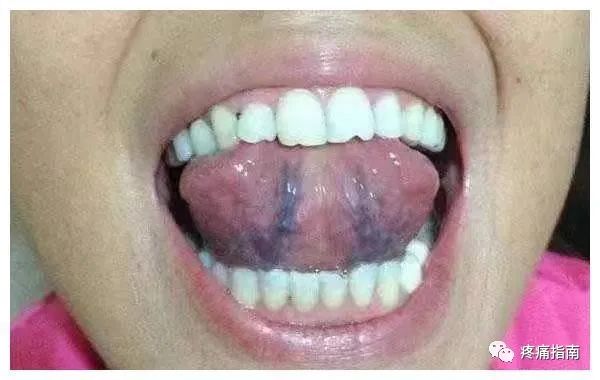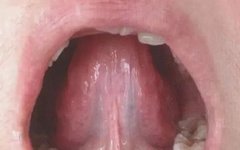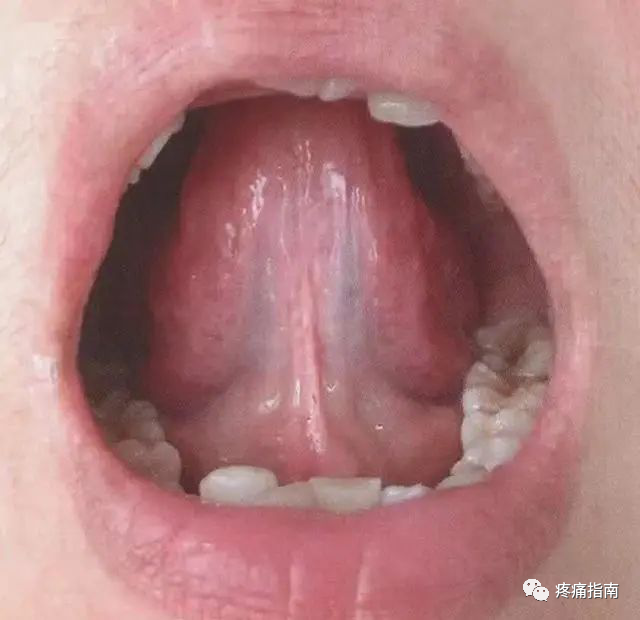The Concept of Sublingual Collaterals
In a normal person, there are two longitudinal collaterals located on each side of the lingual frenulum under the tongue, known as the sublingual collaterals (舌下络脉, jié xià luò mài). The mucosal midline under the tongue forms a prominent fold connecting to the floor of the mouth, called the lingual frenulum (舌系带, jié xì dài). On both sides of the frenulum, through the mucosa, the sublingual veins (舌静脉, jié jìng mài) can be seen in a light blue color, which is referred to in Traditional Chinese Medicine (TCM) as the sublingual collaterals or lingual veins (舌脉, jié mài). In a normal person, the lingual veins are faintly visible, with a diameter not exceeding 2.7 cm and a length not exceeding three-fifths of the line connecting the tip of the tongue to the sublingual tubercle. The color is dark red. The collaterals should not be engorged, tight, curved, or hyperplastic, and they are arranged in an orderly manner. The vast majority are single branches, with very few presenting as double branches.
|
|
 |
Clinical Significance of Sublingual Collaterals
The sublingual collaterals are short and thin, with surrounding small collaterals not being prominent. A pale tongue color often indicates a deficiency of Qi (气, qì) and Blood (血, xuè). If the sublingual collaterals are thick and engorged, or present in colors such as cyanotic, dark red, or purplish-black, or if the small collaterals under the tongue appear as a dark red or purple network, or if the sublingual collaterals are varicose with nodules of varying sizes resembling purple beads, these are all signs of Blood Stasis (血瘀, xuè yū). The causes may include Qi Stagnation (气滞, qì zhì), Cold Congealing (寒凝, hán níng), Heat Accumulation (热郁, rè yù), Phlegm-Dampness (痰湿, tán shī), Qi Deficiency (气虚, qì xū), or Yang Deficiency (阳虚, yáng xū), and should be analyzed in conjunction with other symptoms. Changes in the sublingual collaterals may sometimes precede changes in tongue color, thus making them an important basis for analyzing the circulation of Qi and Blood. The diagnostic method of examining the sublingual collaterals involves observing their color, shape, and fullness to assist in disease judgment. A normal sublingual collateral is faintly visible under the tongue, with a dark red color, soft shape, and no curvature or tightness, not exceeding one-third of the sublingual area. Therefore, when examining for Blood Stasis, one should first observe the sublingual collaterals. The pathological changes of the sublingual collaterals mainly manifest in color and shape. If the color of the lingual veins is cyanotic, and the shape is thick or engorged, it suggests Qi Stagnation and Blood Stasis, or a combination of Phlegm and Blood Stasis; if the color is pale purple, and the shape is thick or engorged, it suggests Cold Evil (寒邪, hán xié) causing stagnation or Qi Deficiency with Blood Stasis; if the color is purplish-red, and the shape is engorged, it suggests Heat Accumulation with Blood Stasis; if the color is pale red or light blue, and the shape is thin, it suggests a weakness of Upright Qi (正气, zhèng qì). Therefore, changes in the sublingual collaterals mainly indicate the presence of Blood Stasis, and based on their colors of cyanotic, pale purple, or purplish-red, one can confirm whether the Blood Stasis is due to Qi Stagnation, Cold Congealing, Qi Deficiency, or Heat Accumulation.

Heart Zen Gate Medical Yi Platform.Welcome friends interested in Buddhist studies, medicine, and Yi studies to follow!
You can enter “Homepage” in the subscription account dialog box to access the micro homepage;
You can also directly click http://t.cn/RPVmllC or “Read the original text” to enter the micro homepage for inquiriesHeart Zen Gate Medical Yi Platform Information


